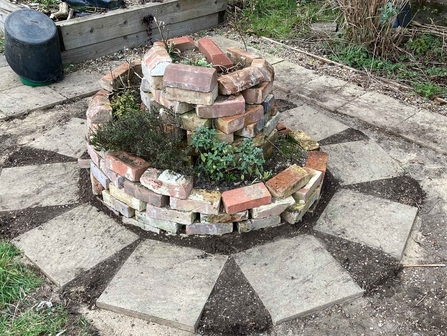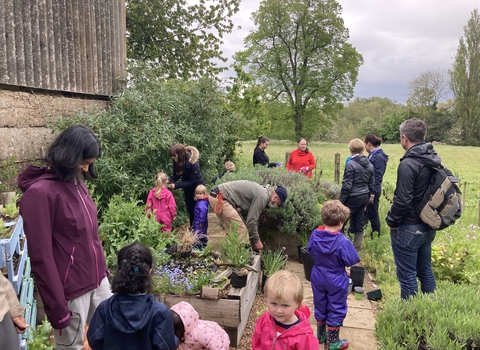Eyes and hearts seem to lift, and projects that were abandoned in the name of our winter hibernation can be picked up and dusted off, ready for the refreshed attention of a new year.
In the Bay Pond Nature Hub garden, the bulbs are sprouting green shoots, and seeds buried in the winter earth are thinking about stirring. Last week was the Celtic festival of Imbolc, whose name means ‘in the belly’, when the soil around us is pregnant with invisible life. Spring will come soon. Not quite yet, but soon.
This change from the dormancy of winter has certainly brought a sense of springtime energy to the garden and its humans. Suddenly, I’m noticing all the work that we’d like to have done before the growing season begins. There are plants to move, a willow bower to plant, and an overgrown bay to cut back before one of our feathered friends decides it looks like a prime spot to nest.
The work ahead of us at the Bay Pond garden is immense. We have a vision, a very flexible vision, which we hope the community will join with us to co-create – there are myriad discrete projects to complete, from digging a pond to making a dead hedge, from building accessible raised beds to erecting a pergola for climbers to ramble over. Then there are all the week-to-week and month-to-month runnings of a garden to keep us busy; sowing seeds, tending seedlings, feeding, mulching, composting, harvesting… The project is huge, and the project is exciting. When we’ve got the infrastructure in place, the use of the garden by regular groups and one-off workshops will enable us (with the amplification of social media) to share messages about wildlife gardening far and wide.
And to get there – small steps. A day at a time, a group at a time, a task at a time. Today was a fantastic example of how progress can be small but oh so satisfying: last summer, a group of families from the local community came together to build a herb spiral*. It was made in the footprint of a recently removed, rotten, raised bed, so although the spiral itself is a thing of beauty, reflecting the cooperative spirit of its creation, it has been sitting for too long in a strange bare rectangle of gravel-covered fabric membrane, making it look a bit misplaced (and that’s putting it kindly). Today we weeded, shovelled gravel, levelled sand, and re-laid slabs to bed the spiral into what will become a thyme-creeping circular patio, and it looks so much, so much the better for it.
There’s still more to do – the next steps are to edge the newly established circle, and to sow the creeping thyme seeds and tend them until they are flourishing. But with a small group of people, who all had a really delightful day in this February sunshine, we got one step closer to creating somewhere very special for wildlife and people to enjoy together. We hope you’ll join us for one of the many small steps along the way.
What is a herb spiral?
A herb spiral is a great way to create microclimates to suit many different herbs within a small space. While rosemary likes to sit high and dry, mint likes it boggy and chives are kept in check by light shade – so cater for them all with a spiral bed, rising from ground level to about a metre high in the middle. The ones who like hot sunshine get prime position on the southern side, that water-wallowing mint can get its roots down into some soggy soil at the bottom, while those who like to be well-drained can sit pretty on the top of the hill. Easy to harvest, easy to make from reclaimed materials, and you’ll have the most diverse herb bed in town.



